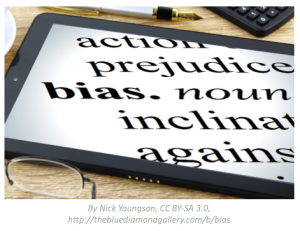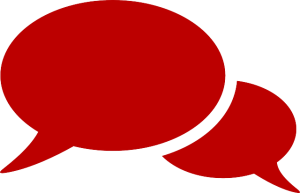I’m Not Biased, Am I?
Tracy Rains
|
Summary
Activities in this Seminar Your seminar consists of a variety of pages and activities to help you learn this concept. Navigate by scrolling through the pages, or by clicking a page name below. Engage – introductory warm-up activity. Explore – collection of resources to read, watch and try. Explain – discuss your ideas / opinions / understandings. Evaluate – quiz for your own self-checking. Elaborate – task or project where you can show what you know. Express – wrap-up activity where you reflect on your learning. Learning Objectives Learning Target I can recognize my implicit bias and outline ways to manage my bias. Habits of Mind Thinking about thinking (Metacognition) Critical Thinking Skills Analyze/apply Academic/Concept Vocabulary Conscious Egalitarian Explicit Bias Implicit bias Explicit bias Unconscious Standards CC.8.5.11-12.G Integrate and evaluate multiple sources of information presented in diverse formats and media (e.g., visually, quantitatively, as well as in words) in order to address a question or solve a problem. Resources Needed Access to the Internet Computer or mobile device Engage Directions Click on the link below to participate in a brief study conducted by Harvard University. You will be asked to agree to the terms. Select a test that you are interested in completing. You can choose between approximately 20 tests (gender, sexual orientation, age, weight, etc.). The purpose of the Implicit Association Test is for you to discover if you have an automatic preference for a particular group over another. Explore Directions Explore these resources to learn about the implicit bias. You can pick and choose to read, watch, then do the activity listed. Read
Read the Unconscious Bias article to gain a better of understanding of unconscious bias and how you can make an effort to prevent your biases from affecting your decisions. For a more detailed look at the types of cognitive biases, read 12 Cognitive Biases That Prevent You From Being Rational. For a more simplified chart of the types of cognitive bias, take a look at 20 Cognitive Biases That Screw Up Your Decisions. Watch
Watch this brief video (Understanding Unconscious Bias) to gain a better understanding of unconscious bias and how you can make an effort to prevent your biases from affecting your decisions. Google created a short video titled, Unconscious Bias at Google, to provide insight on the importance of recognizing your personal biases and limiting their effects. For a more detailed look at the types of cognitive biases, watch 12 Cognitive Biases Explained. <
|
|
Media Attributions
- image1-7 © Nick Youngson via. The Blue Diamond Gallery is licensed under a CC BY-SA (Attribution ShareAlike) license
- Books and tablet © Pixabay via. Pexels is licensed under a Public Domain license
- Taking picture with phone © Pixabay via. Pexels is licensed under a Public Domain license
- Pen and notpad © Pixabay via. Pexels is licensed under a Public Domain license
- Talking bubbles © Image by Clker-Free-Vector-Images from Pixabay is licensed under a CC0 (Creative Commons Zero) license
- Wordle © For the Teachers is licensed under a CC BY-SA (Attribution ShareAlike) license

 Bias is a universal human condition. It is not a personal defect, but it is important to recognize your biases and manage them. We cannot cure unconscious bias, but we can address it. This lesson will provide you the opportunity to identify your personal biases. You have them, even if you think you don’t! You are encouraged to try this lesson so you can be more aware of your personal biases and take the necessary steps to reduce their impact on your life.
Bias is a universal human condition. It is not a personal defect, but it is important to recognize your biases and manage them. We cannot cure unconscious bias, but we can address it. This lesson will provide you the opportunity to identify your personal biases. You have them, even if you think you don’t! You are encouraged to try this lesson so you can be more aware of your personal biases and take the necessary steps to reduce their impact on your life.




